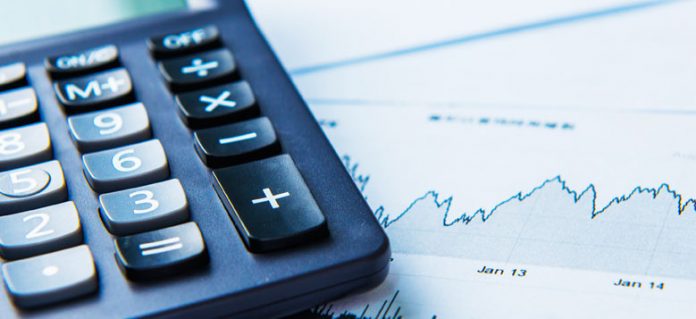1. Summary of Income Statement
1) Definition of Income Statement
Income statement is a report that shows the management performance of how much profit or loss was made during the period by recording the income and expenses incurred over a certain period.
In other words, it shows how much the products produced or purchased by the company for a certain period of time were sold, what were the costs associated with them, and what were the expenses spent for sales or management activities.
2) Function of Income Statement
The income statement is a financial report that provides information on a company’s business performance over a certain period of time. It not only indicates the business performance of the accounting period, but also provides useful information for forecasting the company’s future cash flow and revenue-generating ability.
Information you can get from the income statement |
① Management performance of the company during the accounting period ② Effective cost management ③ Performance of the company’s business activities and performance of financial activities ④ Whether the company continues to grow ⑤ The amount of dividendable profits of the company ⑥ Future income and cash Flow creation ability |
|---|---|
| Income statement application fields |
① Measure management efficiency ② Provide information necessary for forecasting future cash flows to shareholders and creditors ③ Used for managers’ management decisions ④ Used as taxation data for taxation authorities ⑤ Clearly distinguish between capital and profits invested in the company |
3) Income statement and balance sheet
Income statement (income statement) is a report that calculates and determines the net income for the period by comparing all income and expenses incurred within a certain period to reveal the business performance of a company.
On the other hand, a balance sheet is an accounting report that shows the financial position at a certain point in time, and shows where and how much money has been raised by a company and how it has invested. The following information can be obtained through the income statement and balance sheet.
| division | Information |
|---|---|
| Income Statement | ① Business performance of the company during the accounting period ② Effective cost management ③ Performance of the company’s business activities and performance of financial activities ④ Whether the company continues to grow ⑤ The size of the company’s dividendable profits ⑥ Future income and cash Flow creation ability |
| Balance sheet | ① Provides a basis for calculating the rate of return ② Enables evaluation of the financial structure of a company ③ Provides information necessary to evaluate liquidity and financial flexibility ④ Shows accumulated profits retained in the company |
2. Types of Income Statement
The income statement is a financial report that shows the current status of assets, liabilities, and equity of a company, and is classified into a reporting type and an account type according to the format. In order to grasp the figures of the income statement at a glance, the account formula is generally more convenient than the reporting formula.
| Kinds | Characteristic |
|---|---|
| Reporting | A format in which the income statement is listed in the order of assets, liabilities, and equity from top to bottom. |
| Account formula | It is easy to check that the total amount of formal assets and the total liabilities + capital are identical to each other, divided by T-shape, with assets on the left and liabilities and equity on the right |
3. Composition of Income Statement
For example, suppose you want to make money by selling Taiyaki, and you need a total of 100,000 won to purchase ingredients and a kiosk. At this time, if 60,000 won is borrowed from my money and 40,000 won from a friend, 40,000 won is a debt, and 60,000 won becomes capital.If you sell Taiyaki in the first month and you have 20,000 won left in cash, your assets and capital will increase by 20,000 won each. In other words, the asset consisting of Taiyaki ingredients, a kiosk, and cash becomes 120,000 won, and the capital with a profit of 20,000 won added to the initial investment 60,000 won is 80,000 won. Therefore, total capital of 120,000 won, combined with debt 40,000 won and capital 80,000 won, is exactly the same as total assets of 120,000 won.
1) revenue
Assets used in accounting are a concept similar to the assets we use every day. In other words, if property refers to various tangible and intangible legal rights and objects such as cash, deposits, securities, automobiles, house, land, etc. owned by a certain person, the assets of a company are various tangible and intangibles owned by the company. It can be said that the legal rights and goods of
Assets of an entity are classified into current assets and non-current assets depending on whether or not they can be converted into cash within one year from the time the income statement is prepared.
| Type of revenue | Contents |
|---|---|
| Profit | Total economic inflows arising from ordinary business activities Increased assets resulting from transactions with shareholders are not viewed as revenue. Receiving consideration on behalf of a third party, such as VAT, is not viewed as revenue. |
| touch | Total amount of consideration received for product sales and service provision |
| Non-operating income | Increasing net assets due to incidental transactions or events other than the company’s normal business activities |
2) debt
There are two ways to raise debt and the necessary funds for a company: borrowing funds from others and obtaining investments from shareholders. Among them, the money borrowed from others is called debt. In other words, a liability refers to a debt that a company must pay to others through its assets in the present or in the future. Liabilities are also classified into current liabilities and fixed liabilities depending on whether or not they must be repaid within one year from the settlement date.
| Type of debt | Contents |
|---|---|
| Current liabilities | Accounts payable, short-term borrowings, long-term debts with maturity of less than one year, etc. that must be repaid within one year |
| Fixed liabilities | Liabilities such as long-term borrowings repaid after one year |
3) capital
Capital, among the ways that companies raise necessary funds, the funds raised by shareholders investing in the company are called capital. And, among the profits earned from past corporate activities, the surplus accumulated internally is included in the capital, which is not leaked to the outside through dividends. Equity is also referred to as net assets or equity because it becomes equity when the total assets owned by an entity minus its total liabilities. Total capital, which is often used in business analysis, refers to the sum of debt and equity, that is, total assets. A company’s debt-to-equity ratio is the ratio of debt to equity capital.
| Type of capital | Contents |
|---|---|
| capital | Principal invested in a company by owners or shareholders |
| Capital surplus | Surplus incurred by capital transactions, such as stock issuance surcharges, merger gains, capital reduction gains, and other capital surpluses. |
| Retained earnings | Profit reserves, other legal reserves, discretionary reserves, retained earnings carried over to the next, etc. as surplus reserved internally without dividends among profits generated from business activities |
| Capital adjustment | Stock discount issuance difference, dividend construction interest, treasury stock, valuation gain on investment securities, overseas business translation difference, etc. |
4. Precautions when preparing the income statement
Financial statements are useful information for making economic decisions for investors, creditors, shareholders, and the government, who are users of information, and financial statements include income statement, income statement, surplus appropriation statement, cash flow statement, and capital change statement. Financial statements may have different purposes depending on the subject being analyzed.
1) Criteria for preparing the income statement
A standard income statement prepared in accordance with the corporate accounting standards must comply with the following standards.
① The standard income statement is a corporation subject to preparation of the standard balance sheet (for general corporations), and shall be prepared including the profits and losses arising from continuing business and discontinued business in accordance with corporate accounting standards.
② If there is no account title identical to the account title in the income statement, enter it in the similar account title column.
③ Ⅳ.Sales and administrative expenses, Ⅵ.non-operating income and Ⅶ. If there is no same account subject in the non-operating expense category, classify the total amount by item and fill in the columns Ⅳ.18.Other selling and administrative expenses, Ⅵ.19.Other non-operating income and Ⅶ.19 Other non-operating expenses. In the column A, B, and D in the column below, enter the account titles with the largest amount in order, and then enter the relevant amount.
④ “II.(2).2. Total cost for the current period (specification appendix)” refers to the current product manufacturing cost (1. Ⅸ. of the manufacturing cost specification) and current construction cost (in the attached specification 3 Form 3 (3)). 2. ⅩⅠ.) of the construction cost statement, total rental cost (3. total rental cost of the rental cost statement), construction costs such as completed housing for the current period (ⅩⅠ. of the pre-sale cost statement), total transportation cost for the current period (5. Ⅴ.) and the total cost of the current period (6. Other cost statement Ⅸ.) must be the same.
2) Criteria for preparing the income statement
Income statements should be prepared according to the following criteria and should not violate basic principles.
| Basic principles | Preparation criteria |
|---|---|
| Occurrenceism | Income and expenses incurred in the current period must be recorded in the current period. |
| Realism | Revenue should be recorded based on the time of realization |
| Stock, cost response | All expenses incurred in response to revenue must be recognized |
| Grand totalism | The issuance amount of expenses and profits should not be arbitrarily omitted or offset. |
| Classification mark | The principle of dividing revenue and expenses according to business activities |
3) The principle of dividing revenue and expense according to business activities
The income statement is a financial report that shows business performance over a certain period of time, but it must be prepared in consideration of the following limitations.
| division | problem |
|---|---|
| Measurable profit | Only profits that can be measured in currency are measured (manager’s excellent management ability, excellent human resources, m technology, etc. cannot be measured) |
| Historical cost realism |
Unrealized value increase is excluded from the income statement |
| Difficulty of comparison | In the process of measuring profits, there are many accounting methods that can be selected, so it may be difficult to compare between companies or within companies . |
4) Notes on Income Statement
In the income statement, you should be able to determine the quality of the profit rather than the quantity by identifying the source of the profit.
When comparing the income statement, it should be compared with the income statement of a representative company or competitor company in the same industry. Comparing with competitors and industry averages is an essential step in evaluating a company’s performance. It’s a good idea to check your income statement for at least 3 to 5 years.
| Kinds | Preparation criteria |
|---|---|
| Assets | • Assets are classified as current assets and non-current assets on a one-year basis, but inventory assets sold or used within the normal operating cycle and trade receivables recovered are classified as current assets even if they are not realized within one year from the income statement date. In this case, the amount that will not be realized within one year among the amounts classified as current assets is stated in a note
• Among non-current assets such as available-for-sale securities or held-to-maturity securities belonging to long-term receivables or investment assets, the portion realized within one year is current assets Classification |
| fan | • Liabilities are classified into current and non-current liabilities on a one-year basis. However, trade payables and accrued expenses that are expected to disappear within the normal operating cycle are classified as current liabilities even if they are not settled within one year from the date of the income statement. In this case, the amount that will not be settled within one year among the amounts classified as current liabilities is stated in the comments.
• Overdraft, short-term borrowings, and current growth period borrowings must be settled within one year from the date of the income statement. Classification • Among non-current liabilities, the portion of which the outflow of resources is expected within one year from the date of the statement of income is classified as current liabilities. |
5) Purpose of financial statement analysis
Although the purpose of the completed financial statements differs depending on the subject of use, care should be taken to ensure that there are no errors when preparing them as they are used as important information in business activities.
| Financial Statement User | Purpose of analysis |
|---|---|
| Shareholder | Use as investment information through profitability and risk analysis |
| Financial institution | Determining the ability of borrowers to repay principal and interest through credit analysis |
| Credit rating agency | Provides investment information to general investors through bond rating evaluation |
| Auditor, accounting auditor | Disclosure of financial position and management performance to shareholders and stakeholders through analysis of financial position and management performance |
| Tax authorities | By analyzing profitability and taxation ability, determine whether or not taxation adequacy and tax evasion |
6) Characteristics of financial statements
When preparing the income statement, it is necessary to understand the relationship and characteristics of the financial statements so that it can meet the purpose of the preparation.
| division | Characteristic | Analysis content |
|---|---|---|
| Balance sheet | The balance sheet is a report that shows the financial position at a certain point in time, showing where and how much funding the company has raised and how it has invested. | Financial position |
| Income Statement | A report on management performance that shows how much profit or loss has been achieved through business activities over a certain period of time, how much the product produced or purchased by the company has been sold during a certain period, what are the related costs, and sales and management activities Shows how much money was spent for |
Business performance |
| Statement of disposition of retained earnings | A report showing how the company disposed of net income earned in the current period and retained earnings accumulated internally up to a certain point in time. In this report, it is possible to find out how the company determined its dividends and how much it has accumulated for future business plans. At this time, if a loss is incurred, a statement of loss treatment is prepared. | Profit flow |
| Cash flow statement | The cash flow statement is a financial report that displays the company’s cash flows (cash inflows and outflows) over a certain period of time, and provides information on the company’s cash funding and its operation details. | Cash flow |
| Table of changes in capital | Financial statements indicating the amount of capital of an entity at a certain point in time and information on changes in capital of the entity over a certain period of time | Capital status |
5. Sample Income Statement and How to Prepare
1) How to prepare an income statement
① Sales (sales)
Sales are the total sales of products, products, and services arising from the company’s main business activities, minus sales discounts, sales reversals, and sales surcharges. Sales can be classified by business type or division, and if semi-finished product sales, by-product sales, working waste sales, exports, long-term installment sales, etc. are important, indicate them separately or write them in notes. Revenue from non-main operating activities is calculated as non-operating income, and revenue from extraordinary activities is calculated as special income.
| division | Contents |
|---|---|
| Product sales | Buying and selling products from outside |
| Product sales | When a product is manufactured and sold in a factory |
| Service Sales | Sales received from providing services, etc. |
| Domestic sales | Sales in Korea |
| Export sales | Sales from overseas |
② Cost of sales
Cost of sales refers to the cost of purchasing a product or manufacturing a product from among sales. That is, it is the manufacturing cost or purchase cost of the product or product sold as a cost corresponding to the sales amount of the product or product. The process of calculating the cost of sales is indicated in the body of the income statement or stated as a note. The cost of sales is calculated by adding the current product manufacturing cost (or current product purchase amount) to the stock amount of the underlying product (or commodity) and deducting the stock amount of the ending product (or commodity). If there is an increase or decrease in the product or commodity due to reasons other than production, sale or purchase, it is reflected in the calculation of the cost of sales.
③ gross profit and loss
Gross profit or loss refers to the amount obtained by deducting the cost of sales from the sales obtained according to the results of business activities of the company. If the amount of sales is greater than the cost of sales, gross profit appears, and if it is small, gross loss occurs. Gross profit or loss is the source of a company’s operating profit or loss. Gross profit and loss may be negative due to excessive discount sales.
⑤ Selling and administrative expenses
Expenses arising from sales activities such as products, goods and services, or management and maintenance of the company, including all operating expenses that are not included in the cost of sales, such as salaries, welfare benefits, depreciation expenses, rental fees, entertainment expenses, depreciation expenses, and advertising expenses. Selling and administrative expenses may be classified into appropriate items that indicate the relevant expenses, or may be displayed collectively. In the case of collective labeling, separate them into appropriate items and write them in comments.
⑥ Operating gain and loss
Operating profit or loss is calculated by subtracting sales and administrative expenses from gross profit or loss. If the operating profit is in the black, it becomes operating profit, and if it is in the red, it becomes operating loss. Operating profit or loss is an important measure of the soundness of business management.
⑦ Non-operating income
Although it is not the company’s main business activity, it is assumed that it does not fall under discontinued business profit or loss as profits and profits arising from other activities such as financial activities that support it.
Non-operating income includes interest income, rental income, and dividend income.
| Type of non-operating income | Inventory contents |
|---|---|
| Interest income | Interest on loans received by lending funds, interest on bank deposits, and interest on investment bonds |
| Dividend income | Dividends received from distribution of profits or surplus on short-term investment assets and long-term investment assets such as owned stocks and investments; |
| rent | Profits received in exchange for rental property use under the lease agreement |
| Gain on disposal of securities | Profits generated by disposing of short-term certificates such as CD and CP, marketable equity securities such as stocks, and debt securities such as debentures or bills at a price higher than the acquisition price. Calculated by comparing the acquisition price with the amount deducting incidental expenses from the disposal price |
| Gain on valuation of securities | In the case of acquisition and holding of securities, the difference between the acquisition price and the value at the evaluation date when the securities held at a certain point, such as the settlement date, are evaluated at the market value of the evaluation date. Valuation loss occurs when the valuation is less than the acquisition price, and valuation gain occurs when the valuation is greater than the acquisition price. |
| Foreign exchange gains | It occurs due to the difference between the exchange rate acquired and the exchange rate recovered.Foreign currency assets and liabilities held as of the settlement date are evaluated at the exchange rate at the settlement date, and if a difference occurs, it is treated as foreign currency exchange income. |
| Equity method valuation gain | If there is a stake invested in a subsidiary or other company, the profit or loss of the investee company is reflected as its own interest |
| Gain on disposal of tangible assets | Occurs when the recovered price is higher than the actual book value by disposing of the asset with profits arising from the disposal of tangible assets such as land, buildings, machinery, etc. |
⑧ Non-operating expense
Although it is not the company’s main business activity, it is assumed that it does not fall under discontinued business profit or loss as expenses and losses incurred from other activities such as financial activities that support it. Non-operating expenses include interest expenses and donations.
⑨ Continuing income and loss before income taxes
Profit before tax is paid. Profit or loss from continuing business before income tax is calculated by adding non-operating income to operating income and deducting non-operating expenses.
⑩ Income tax expense from continuing business
Income tax expense from continuing business is the income tax expense incurred in response to profit or loss from continuing business. A tax owed to the state on profits earned by the company is levied on income earned from business activities. Income tax expense from continuing operations is recognized as an expense in the period in which operating activities are reported.
⑪ Profit and loss from continuing business
Continuing business profit or loss is calculated by deducting the income tax expense from continuing business from continuing business profit or loss before income tax expense.
>h4> ⑫ Profit from discontinued operation Profit or loss from discontinued operation is operating profit or loss arising from discontinued operation and non-operating profit or loss, including direct discontinuation costs and impairment loss on assets of discontinued operations, and is reported as the net amount after deducting income tax Write the calculation details in comments. In this case, the income tax effect on the discontinued business profit or loss is expressed in parentheses after the discontinued business profit or loss in the income statement.
⑬ Net income & loss for the year
Net income earned in the current year (1 year) is calculated by adding or subtracting the discontinued business profit or loss from continuing operation profit or loss. In this case, each item of other comprehensive income shall be expressed as the amount after deducting the related income tax effect, and the details of the income tax effect shall be separately stated. It is possible to know whether the company is in the black or the black with the item of net income.
6. FAQ on the preparation of income statement
1) How should I analyze the income statement?
| division | Analysis method |
|---|---|
| Asset analysis | Assets are classified into current assets and non-current assets, and their classification is based on one year. Anything that can be monetized within one year or becomes an expense is a current asset, and anything that takes more than one year to become cash or expense becomes a non-current asset. The income statement is prepared by the liquidity arrangement method. Here, the liquidity arrangement method refers to arranging account subjects in the order of liquidity, that is, assets that can be quickly converted into cash. |
| Debt analysis | Liabilities are also classified into current liabilities and fixed liabilities on a one-year basis. In other words, current liabilities are liabilities that are obligated to pay consideration to the other party within one year, and fixed liabilities are liabilities that are obligated to pay consideration over a period of one or more years. The arrangement of debts is also arranged according to the liquidity arrangement method. |
| Analysis of capital | Capital is classified into capital stock, capital surplus, and retained earnings depending on the source of its occurrence. Capital stock refers to the par value of stocks, and capital surplus refers to the surplus arising from transactions that cause an increase or decrease in capital. On the other hand, retained earnings refer to the increase in net assets when a company’s net assets increase as a result of operating activities. |
2) How can I know whether it is a good company through the income statement?
The “debt ratio”, which is most commonly used in the income statement, is calculated by dividing total liabilities by total equity. In general, companies with low debt ratios and high reservation rates are classified as superior companies. This is because the low debt-to-equity ratio means that external debt is relatively small. However, it is the current situation that even a good company is going into surplus bankruptcy due to clogged cash flow. Therefore, in order to know this properly, it is necessary to view the cash flow statement for the previous year and the cash flow statement for the current year.
“Economic Value Added (EVA)” is used as an indicator that can be seen in place of the debt ratio. There are several ways to find economic added value, but you can simplify and use it by subtracting the market interest rate from the return on equity capital (net income/equity capital). It can be said that it is a good company only when the economic value added is positive. However, no matter how good the indicators appear, it is a problem if accounting is manipulated.
Therefore, in addition to the general indicators, more reliable information can be obtained if you look at the case of a sharp increase in inventory assets, an increase in unnecessary processed assets, a lot of transactions with affiliates, a lot of debts, and a lot of deposits.
3) What is the difference between the income statement and the income statement?
The income statement (balance sheet) is an accounting report that shows the financial position at a certain point in time, and shows where and how much money has been raised by a company and how it has invested. On the other hand, the income statement (income statement) is a report that calculates and confirms the net income for the period by comparing all income and expenses incurred within a certain period to reveal the business performance of a company. Information that can be obtained through the income statement and income statement is as follows.
| division | Information you can get |
|---|---|
| Income statement | ① Provides a basis for calculating the rate of return ② Enables evaluation of the financial structure of a company ③ Provides information necessary to evaluate liquidity and financial flexibility ④ Shows accumulated profits retained in the company |
| Income Statement | ① Business performance of the company during the accounting period ② Effective cost management ③ Performance of the company’s business activities and performance of financial activities ④ Whether the company continues to grow ⑤ The size of the company’s dividendable profits ⑥ Future income and cash Flow creation ability |
4) What is a capital increase to increase the size of capital?
Capital increase is a company’s increase in capital stock by a certain amount, and a common method to increase capital stock is capital increase . The type of increase is divided into a paid-in capital increase, in which the issuance of new shares leads to substantial increase in assets, and a free increase in equity capital, without increasing real assets. Others include convertible bond conversion and stock dividends.
| Increase method | How to increase capital |
|---|---|
| Capital increase | Paid-in capital increase is the purchase of new shares issued by the company by old shareholders or a third party, and the funds received at this time are assets that do not have to pay interest, so it has the effect of improving the financial structure from the perspective of the company. There are three types of capital increase.
① A method of allocating shareholders that recruits new shareholders |
| Free increase | A free increase is an increase in capital for business expansion, and refers to issuing new stocks based on in-house reserves such as earnings reserves, revaluation reserves, and capital surplus, and allocating them to former shareholders for free. Therefore, there is no separate cash inflow for a free increase, and only increases or decreases in the account from capital surplus or retained earnings to capital. |





































